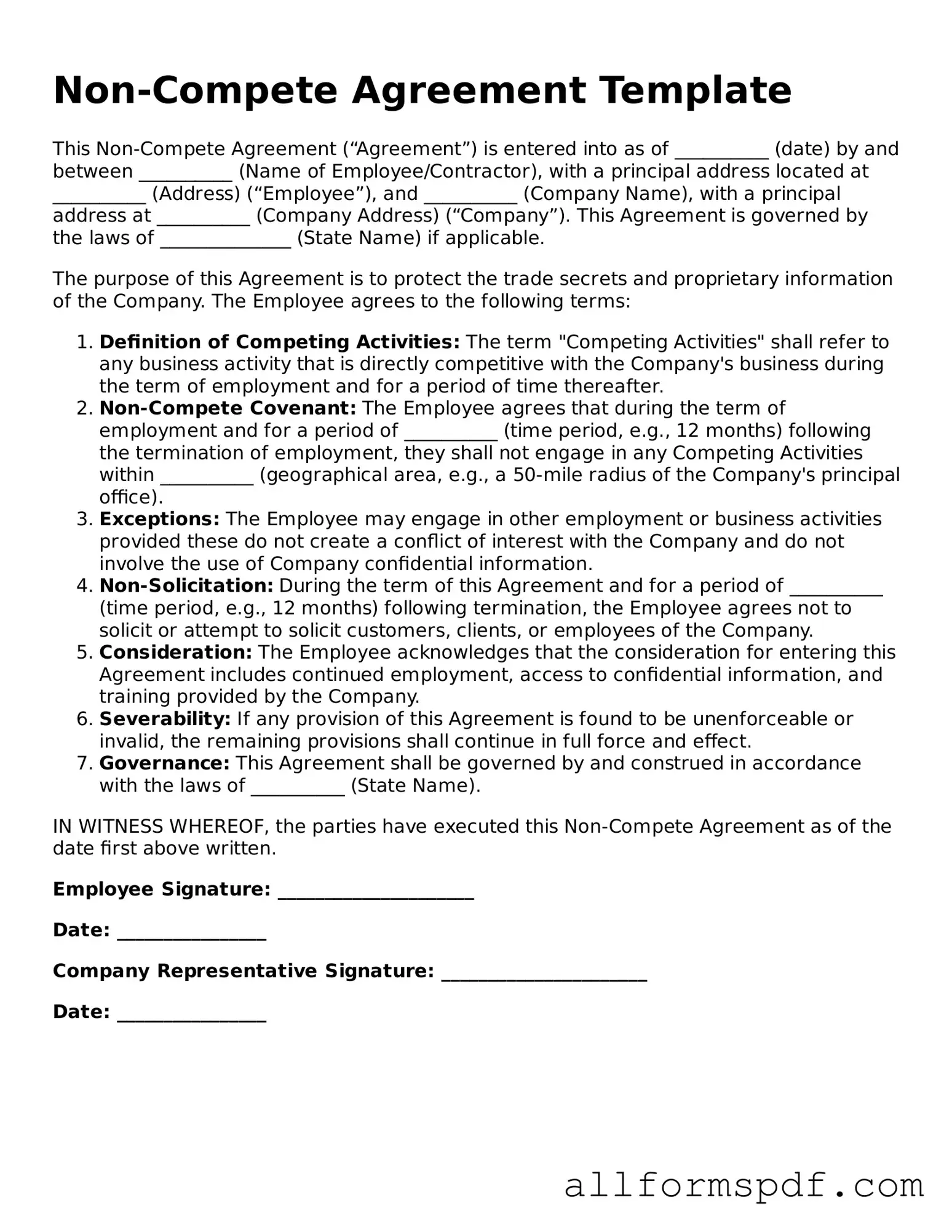Printable Non-compete Agreement Form
A Non-compete Agreement is a legal contract between an employer and an employee that restricts the employee from engaging in competitive activities for a specified period after leaving the company. These agreements aim to protect the employer's business interests, including trade secrets and client relationships. Understanding the terms and implications of a Non-compete Agreement is essential for both parties involved.
Create My Non-compete Agreement Now
